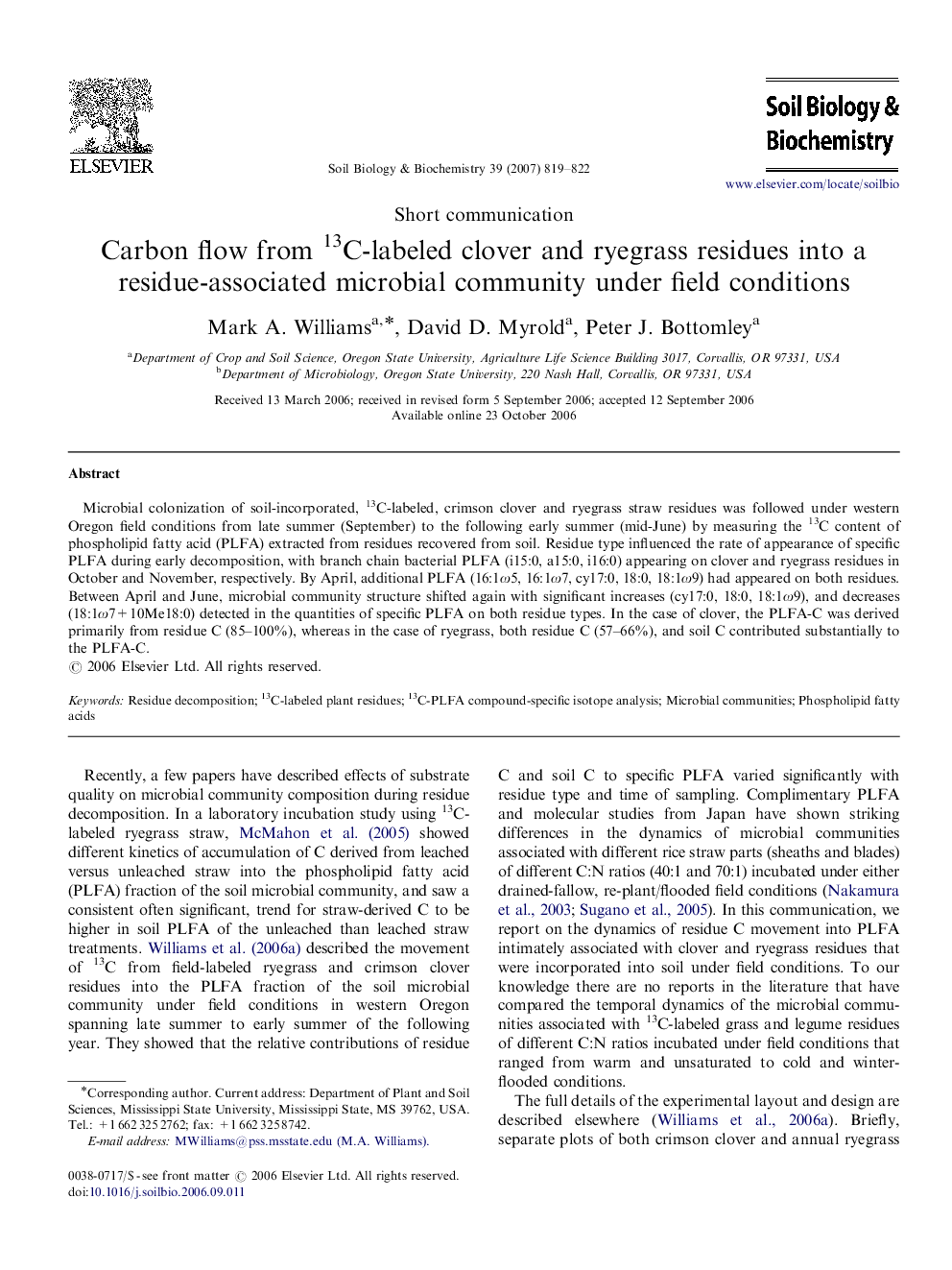| کد مقاله | کد نشریه | سال انتشار | مقاله انگلیسی | نسخه تمام متن |
|---|---|---|---|---|
| 2025740 | 1070008 | 2007 | 4 صفحه PDF | دانلود رایگان |

Microbial colonization of soil-incorporated, 13C-labeled, crimson clover and ryegrass straw residues was followed under western Oregon field conditions from late summer (September) to the following early summer (mid-June) by measuring the 13C content of phospholipid fatty acid (PLFA) extracted from residues recovered from soil. Residue type influenced the rate of appearance of specific PLFA during early decomposition, with branch chain bacterial PLFA (i15:0, a15:0, i16:0) appearing on clover and ryegrass residues in October and November, respectively. By April, additional PLFA (16:1ω5, 16:1ω7, cy17:0, 18:0, 18:1ω9) had appeared on both residues. Between April and June, microbial community structure shifted again with significant increases (cy17:0, 18:0, 18:1ω9), and decreases (18:1ω7+10Me18:0) detected in the quantities of specific PLFA on both residue types. In the case of clover, the PLFA-C was derived primarily from residue C (85–100%), whereas in the case of ryegrass, both residue C (57–66%), and soil C contributed substantially to the PLFA-C.
Journal: Soil Biology and Biochemistry - Volume 39, Issue 3, March 2007, Pages 819–822